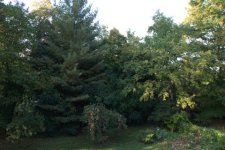I am looking for an answer to this question.
Over the past week I have been working on project to capture the leaves falling off the trees and their changing colours. The only thing is my sky I very blown out. It does not matter if its sunny or cloudy. Since I am doing this late in the day a Polarizer, will make things difficult in the post production.
The settings I am using are
F8
ISO 200
18MM Lens
Neutral Density Filter
Over the past week I have been working on project to capture the leaves falling off the trees and their changing colours. The only thing is my sky I very blown out. It does not matter if its sunny or cloudy. Since I am doing this late in the day a Polarizer, will make things difficult in the post production.
The settings I am using are
F8
ISO 200
18MM Lens
Neutral Density Filter

